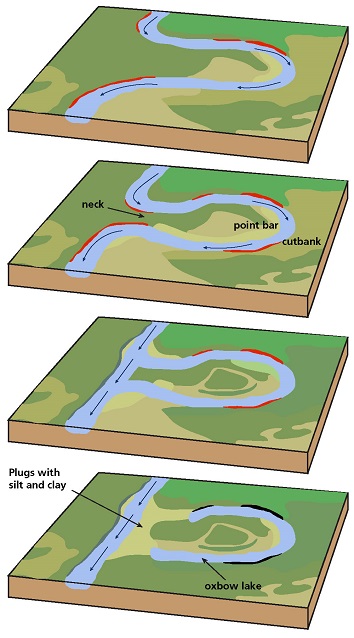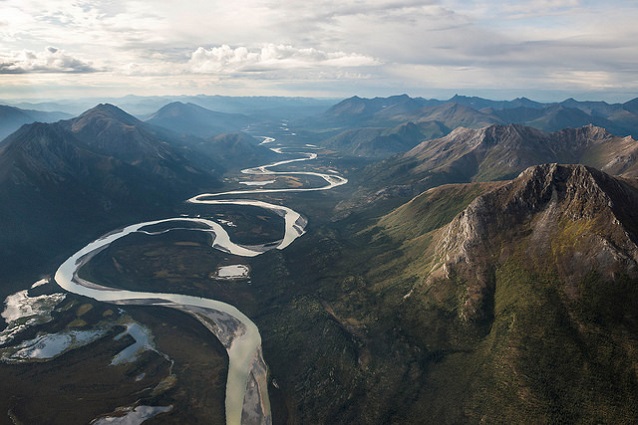
Phil Reiker, NPS Geologic Resources Division
A meandering stream has a single channel that winds snakelike through its valley, so that the distance 'as the stream flows' is greater than 'as the crow flies.' As water flows around these curves, the outer edge of water is moving faster than the inner. This creates an erosional surface on the outer edge (a cut bank) and a depostional surface on the inner edge (a point bar). Where the bends of two meanders meet, they bypass the curve of river, creating an oxbow lake which may then be infilled with overwash sediment.
Meanders change position by eroding sideways and slightly downstream. The sideways movement occurs because the maximum velocity of the stream shifts toward the outside of the bend, causing erosion of the outer bank. At the same time the reduced current at the inside of the meander results in the deposition of coarse sediment, especially sand. Thus by eroding its outer bank and depositing material along its inner bank, a stream moves sideways without changing its channel size. Due to the slope of the channel, erosion is more effective on the downstream side of a meander. Therefore, in addition to growing laterally, the bends also gradually migrate down the valley.

NPSphoto
Notice the oxbow lakes and point bar formation in this meandering river!
Relataed Links
Last updated: April 22, 2020
